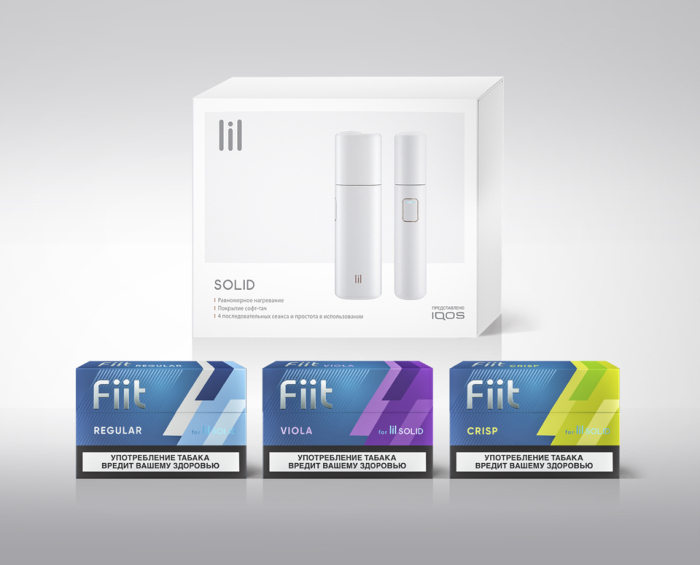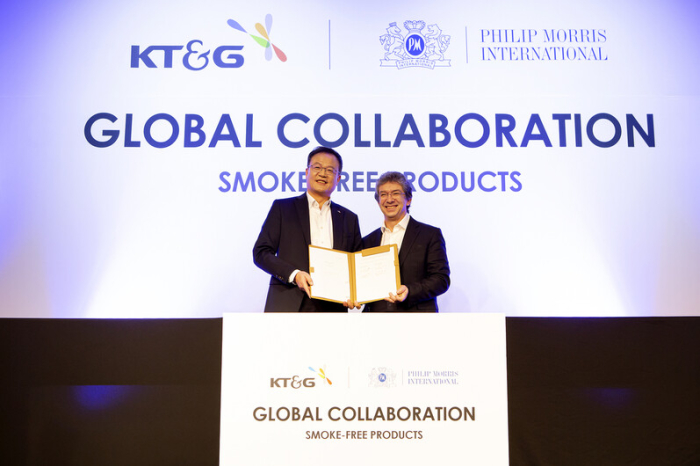Tobacco
KT&G expands global foothold with 4,700 e-cigarette IP rights
Despite entering the market two years after its global rivals, KT&G’s “fast follower” approach is turning out successful
By Jun 25, 2021 (Gmt+09:00)
3
Min read
Most Read
LG Chem to sell water filter business to Glenwood PE for $692 million


Kyobo Life poised to buy Japan’s SBI Group-owned savings bank


KT&G eyes overseas M&A after rejecting activist fund's offer


StockX in merger talks with Naver’s online reseller Kream


Mirae Asset to be named Korea Post’s core real estate fund operator



The world’s fifth-largest tobacco maker KT&G Corporation is rapidly widening the global reach of its e-cigarette products, which have become increasingly popular in Eastern Europe and The Commonwealth of Independent States (CIS).
In the second quarter of this year, KT&G has added four more markets -- Armenia, Serbia, Kazakhstan and Kyrgyzstan -- to the list of countries that import its heat-not-burn (HNB) e-cigarette device and products, according to the global tobacco industry on June 25.
KT&G’s e-cigarette device uses the simple brand name of lil, which is compatible with the company’s Fiit tobacco sticks for smoking. The device globally competes with IQOS by Philip Morris International (PMI) and glo by British American Tobacco (BAT).
The Korean tobacco firm first developed lil in November 2017, more than two years after the global market leader PMI launched the paradigm-shifting, smoke-free IQOS product in September 2015.
KT&G started to export its e-cigarette lineup from last August, launching lil and Fiit in Russia. In September and October of the same year, KT&G respectively made inroads into the Ukrainian and the Japanese markets.
KT&G said that its lil HYBRID 2.0 product was particularly popular in Japan, the largest e-cigarette market in the world, as it successfully differentiated itself from other devices in the market by combining HNB-type tobacco and vapor-type tobacco into a single device.
Many smokers often complain that the HNB-type tobacco tastes like “steamed grass” and lacks the “kick” that the traditional combustible cigarettes offer. A KT&G representative highlighted that its hybrid devices could remedy the HNB-type tobacco’s shortcomings with rich flavors offered by vapor-type tobacco.
“The hybrid device was a big hit, having differentiated itself from other regular heat-not-burn products,” added the representative.
FAST FOLLOWER APPROACH
Industry analysts stress that KT&G could successfully position itself as one of the heavyweights in the global e-cigarette segment as it adopted the strategy of becoming a fast follower, having entered the market more than two years after its American and British rivals, rather than trying to be the market leader.
The best example of its fast follower approach is its partnership with its long-time rival and the e-cigarette industry pioneer PMI.

KT&G gave a big surprise to industry watchers by forming a strategic partnership in January 2020 with PMI for lil’s global marketing. The three-year partnership allows KT&G to supply its e-cigarette products to PMI, which uses its resources, know-how and infrastructure for marketing and distribution of KT&G’s products in global markets.
KT&G has entered all seven overseas markets, from Russia last year to Kyrgyzstan this quarter, under this partnership model. KT&G said it will enter at least three more markets within 2021.
The market analysts also emphasize that KT&G’s heavy focus on technology is its key competitive edge over the global competitors. They say that lil HYBRID 2.0 was innovative in that it was the first HNB device to remove all buttons, as it had a Smart-On function that automatically started heating the tobacco stick after it was inserted into the device.
In constrast, the devices made by KT&G’s competitors require the smokers to press the heat-up buttons after inserting the sticks. Other innovations by KT&G include less-smell products, which came after the consumer research that most e-cigarette smokers preferred e-cigarettes over combustible cigarettes because of better smell.
Thanks to its near-ceaseless efforts in e-cigarette research and development, KT&G globally earned a total of 4,761 intellectual property (IP) rights in the segment as of last year. Of the total, 1,789 were patent rights certified in 12 countries, 2,194 were trademark rights in 65 countries and 778 were design rights in 13 countries.
“We will lead the global e-cigarette market by focusing first and foremost on technology,” said KT&G.
Write to Sul-li Jun at sljun@hankyung.com
Daniel Cho edited this article.
More to Read
-
 Tobacco sharesKT&G resurfaces as coveted dividend player at year's close
Tobacco sharesKT&G resurfaces as coveted dividend player at year's closeNov 20, 2020 (Gmt+09:00)
3 Min read
Comment 0
LOG IN


